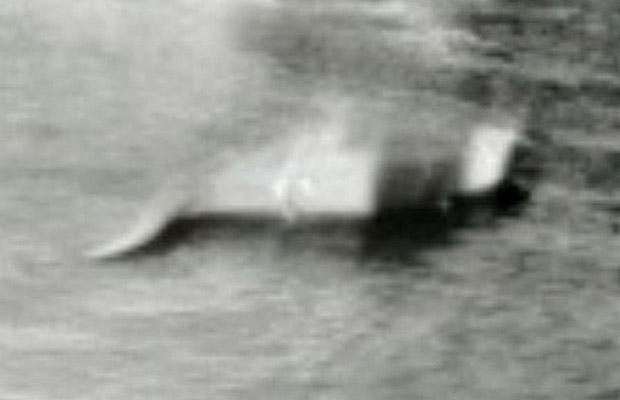
November 18, 2011
November, it turns out, is a month of some importance in the history of the Loch Ness Monster.

The first photographic image of the Loch Ness Monster was taken near Foyers in November 1933, 78 years ago. The Gray photograph was obtained on 12 November 1933, by Hugh Gray, who was walking back from church when he saw an “object of considerable dimensions, making a big splash with spray on the surface of the Loch.”
Hugh Gray had his camera with him, so he began snapping pictures.
Debunkers have dismissed the one Gray photo that seems to appear to be the “Monster” as a blurry blob that shows hardly anything at all. Many have suggested that it looks like a distorted image of a dog (perhaps Mr. Gray’s) carrying a stick in its mouth, as it swims through the water.
But others dispute this easy explanation. One critic of the “dog debunking” is artist Jeff H. Johnson of Texas, who has analyzed the photograph in depth, in conjunction with his creation of a model of one of the Loch Ness Monsters. Johnson says it merely is “pareidolia at its most convenient.”
Johnson found that one of the originators of the dog explanation, Dick Raynor “has changed his mind and now thinks it was perhaps a dead goose or swan laying on the surface,” despite the fact that Raynor still has the “dog” explanation up on his site.
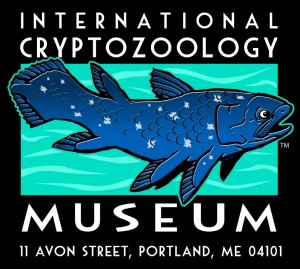

This week, at the International Cryptozoology Museum, we added to the Loch Ness Monster displays, Jeff H. Johnson’s replica of the Loch Ness Monster (above). Besides the Gray photograph, Johnson used the configuration and mottling that he found in various image of the Loch Ness Monsters, for example, as shown here with Tim Dinsdale (below).
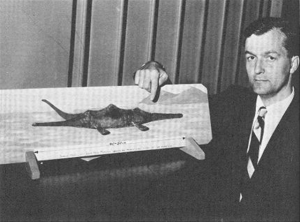
Johnson also used the structure of the Monster as seen in the drawings of the creature as described in the Arthur Grant encounter of 1934.
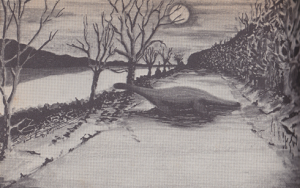
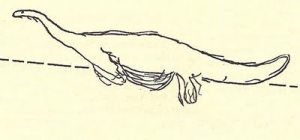
BTW, the term “monster” was reportedly applied for the first time to the creature on 2 May 1933 by Alex Campbell, the water bailiff for Loch Ness and a part-time journalist, in a report in the Inverness Courier. Campbell reaffirmed and reminded historians of this in The Sun of 27 November 1975: “I’m the man who first coined the word ‘monster’ for the creature.”

Johnson’s work also includes his Thylacine and Bigfoot (now at the ICM), and hopefully someday his Caddy (below).
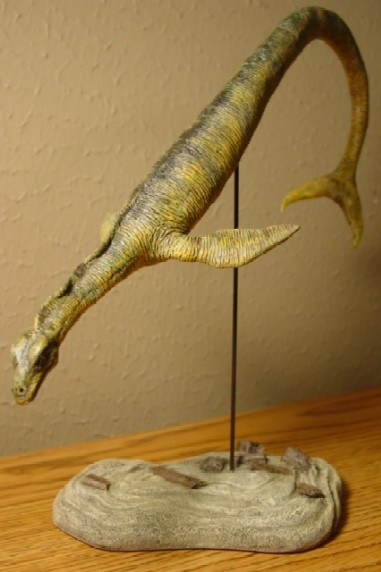
About Loren Coleman
Loren Coleman is one of the world’s leading cryptozoologists, some say “the” leading living cryptozoologist. Certainly, he is acknowledged as the current living American researcher and writer who has most popularized cryptozoology in the late 20th and early 21st centuries.
Starting his fieldwork and investigations in 1960, after traveling and trekking extensively in pursuit of cryptozoological mysteries, Coleman began writing to share his experiences in 1969. An honorary member of Ivan T. Sanderson’s Society for the Investigation of the Unexplained in the 1970s, Coleman has been bestowed with similar honorary memberships of the North Idaho College Cryptozoology Club in 1983, and in subsequent years, that of the British Columbia Scientific Cryptozoology Club, CryptoSafari International, and other international organizations. He was also a Life Member and Benefactor of the International Society of Cryptozoology (now-defunct).
Loren Coleman’s daily blog, as a member of the Cryptomundo Team, served as an ongoing avenue of communication for the ever-growing body of cryptozoo news from 2005 through 2013. He returned as an infrequent contributor beginning Halloween week of 2015.
Coleman is the founder in 2003, and current director of the International Cryptozoology Museum in Portland, Maine.
Filed under CryptoZoo News, Cryptozoology, Lake Monsters, Loch Ness Monster, Museums